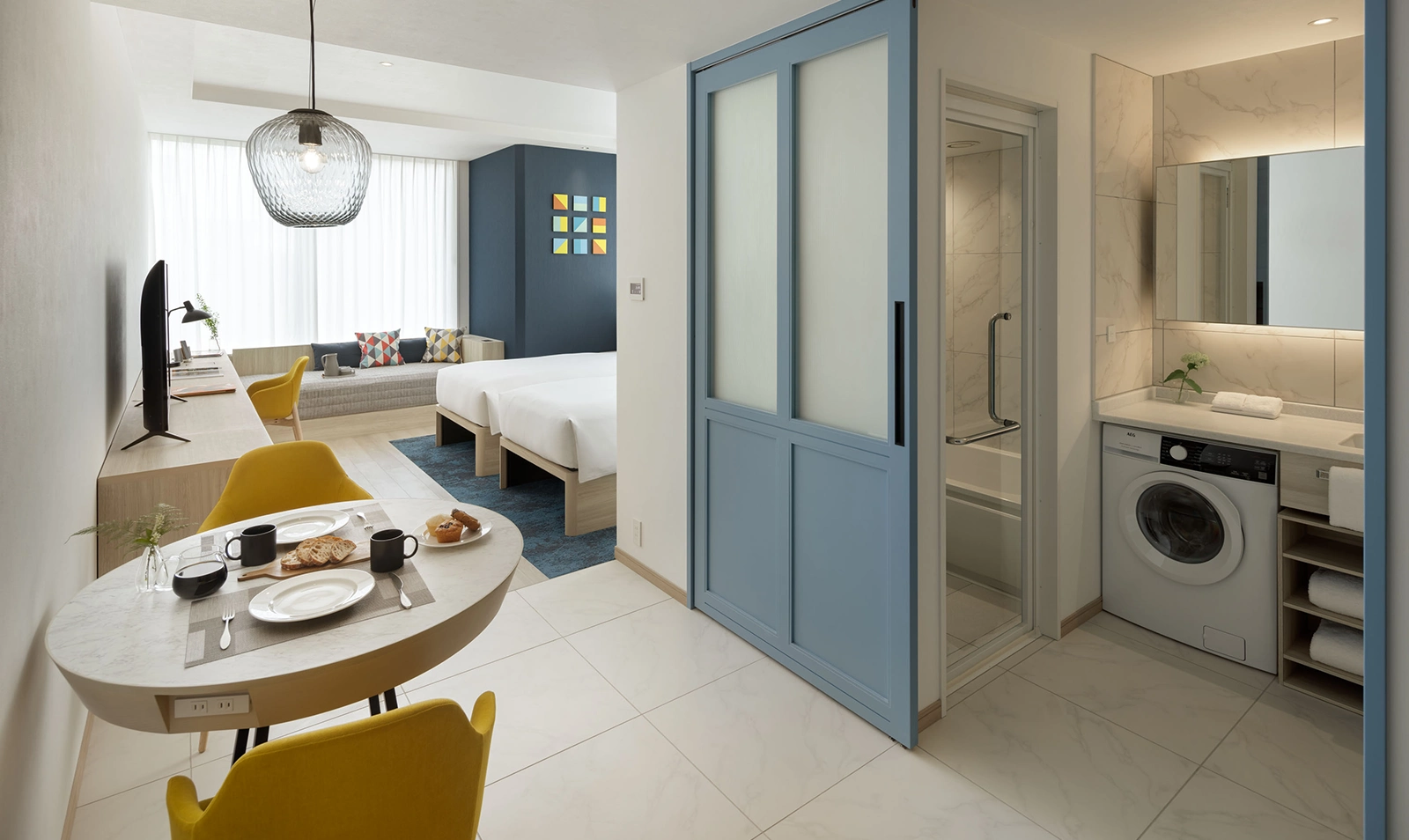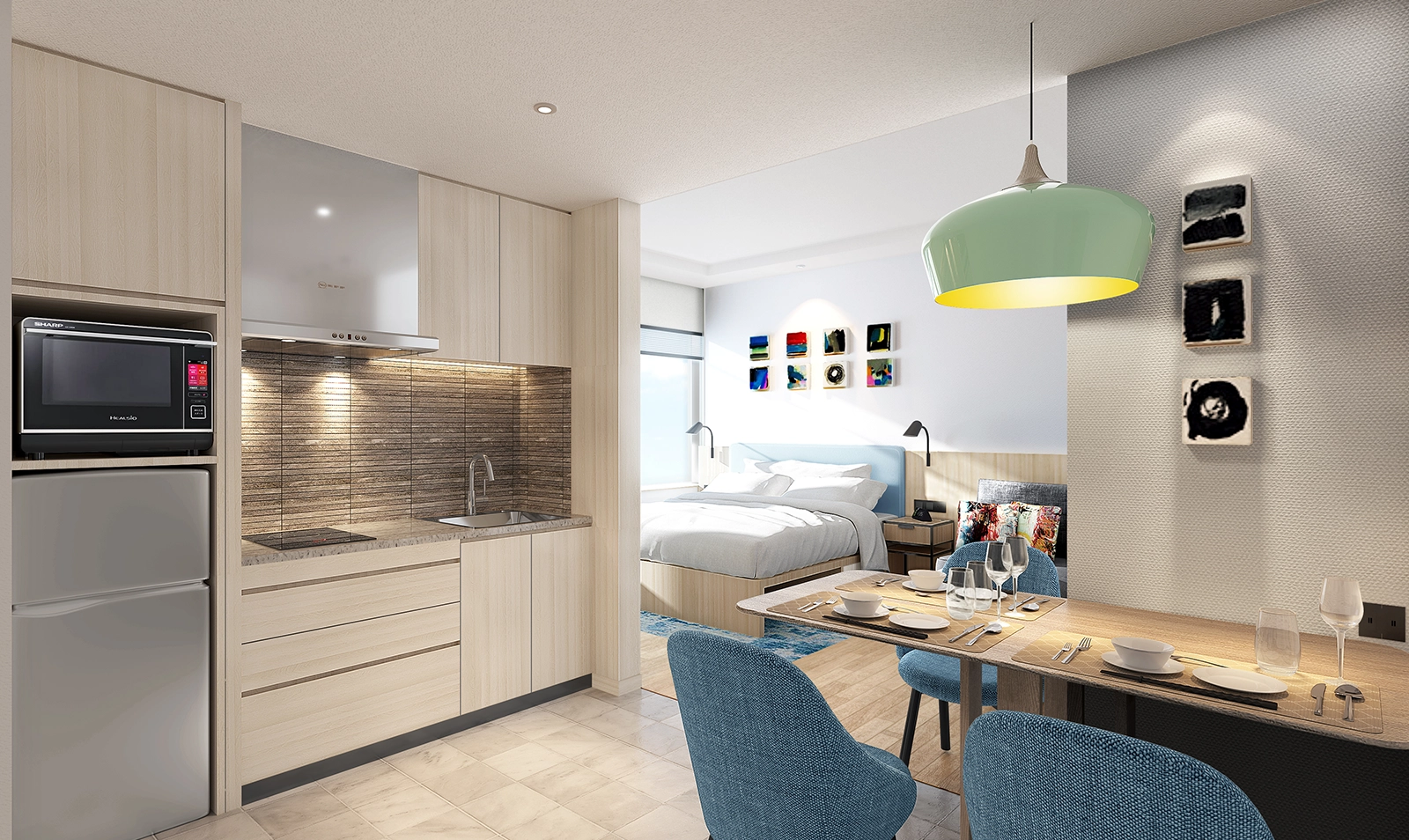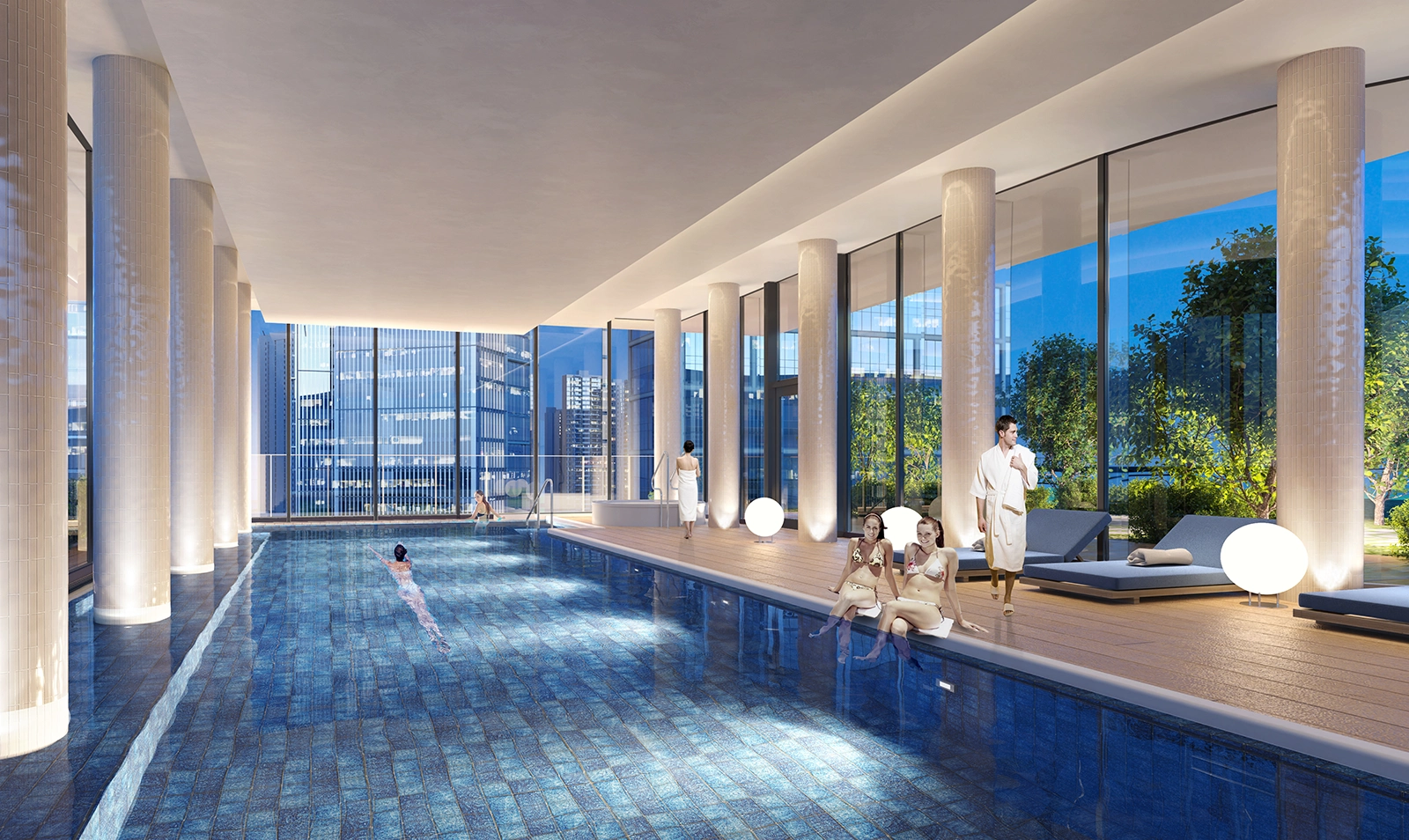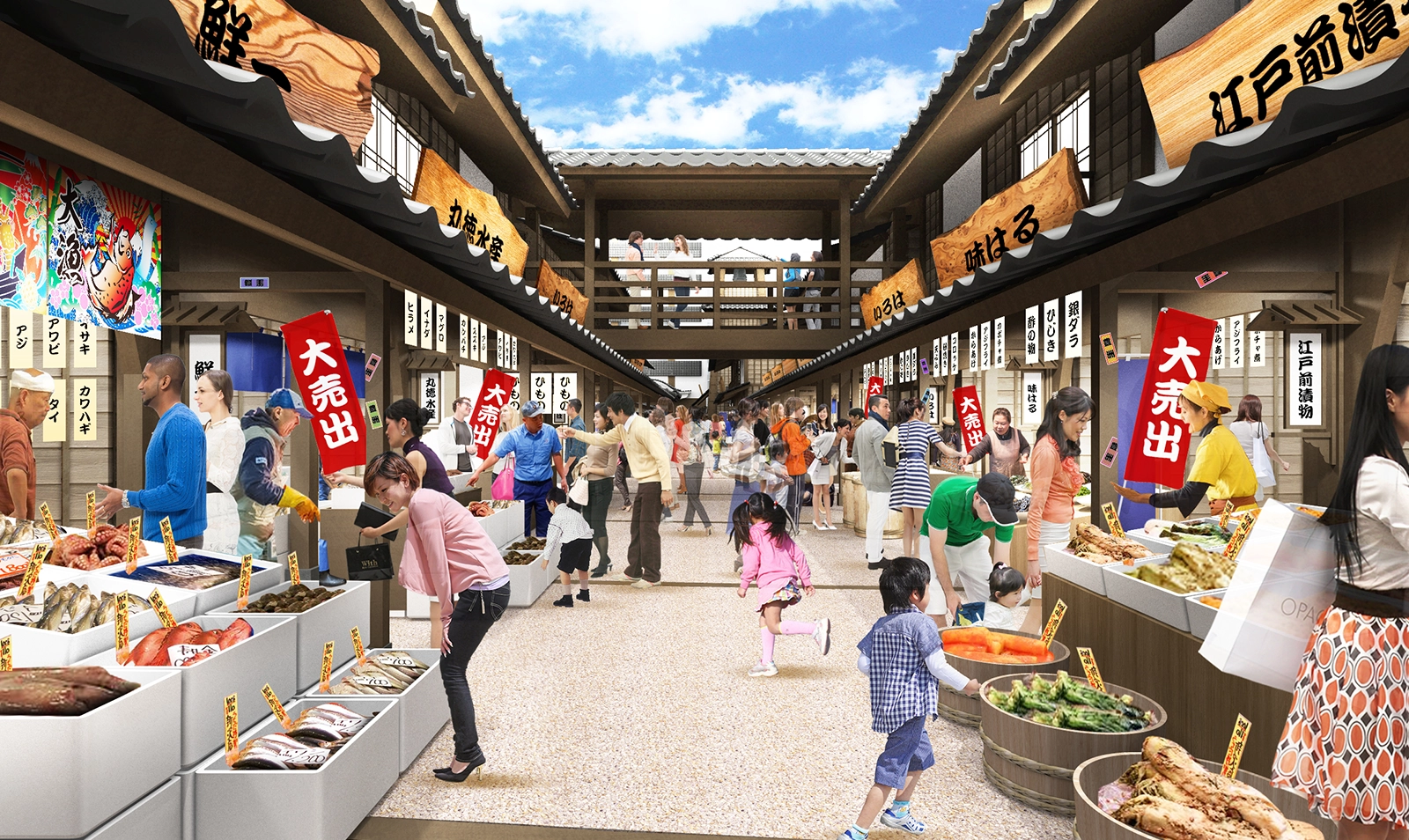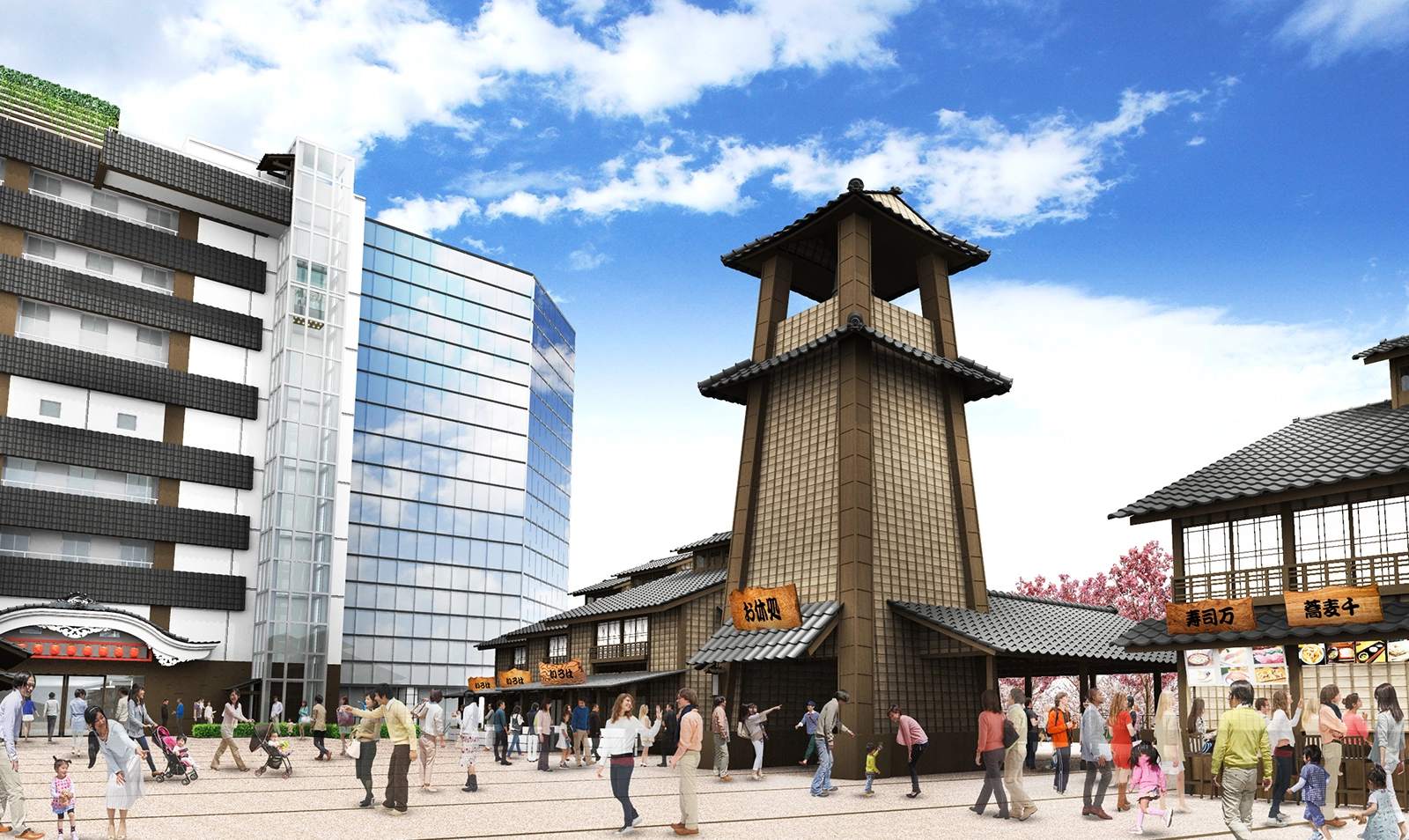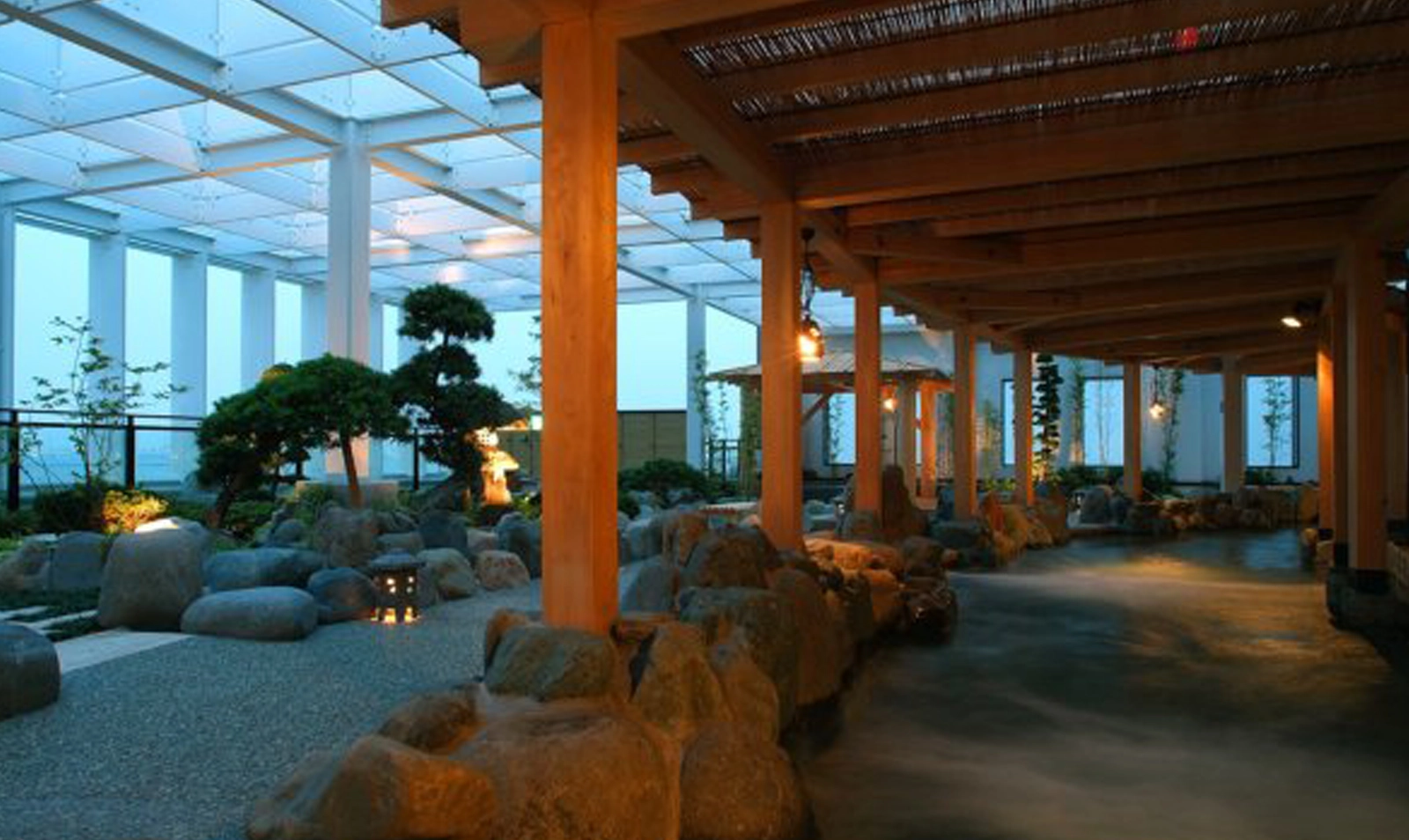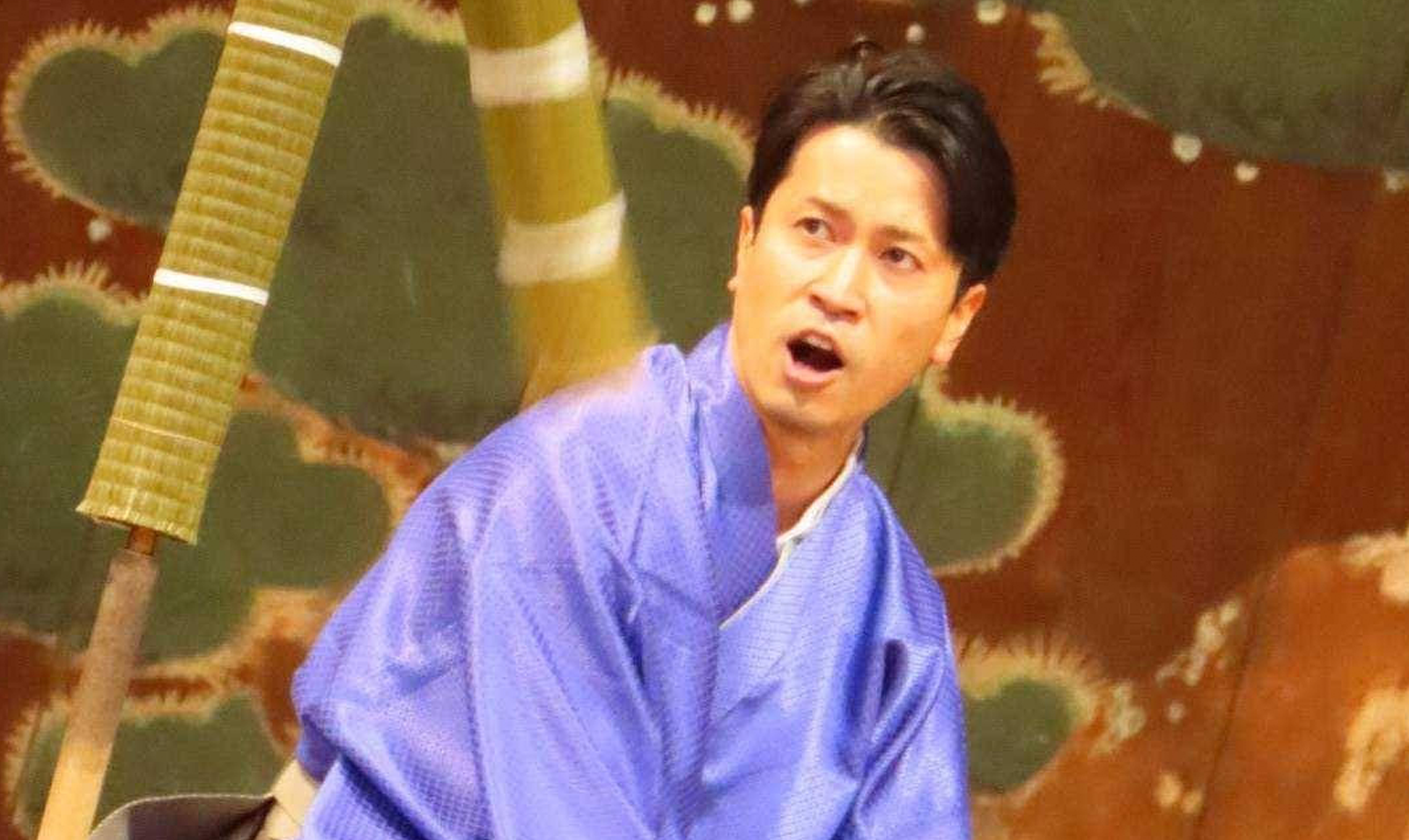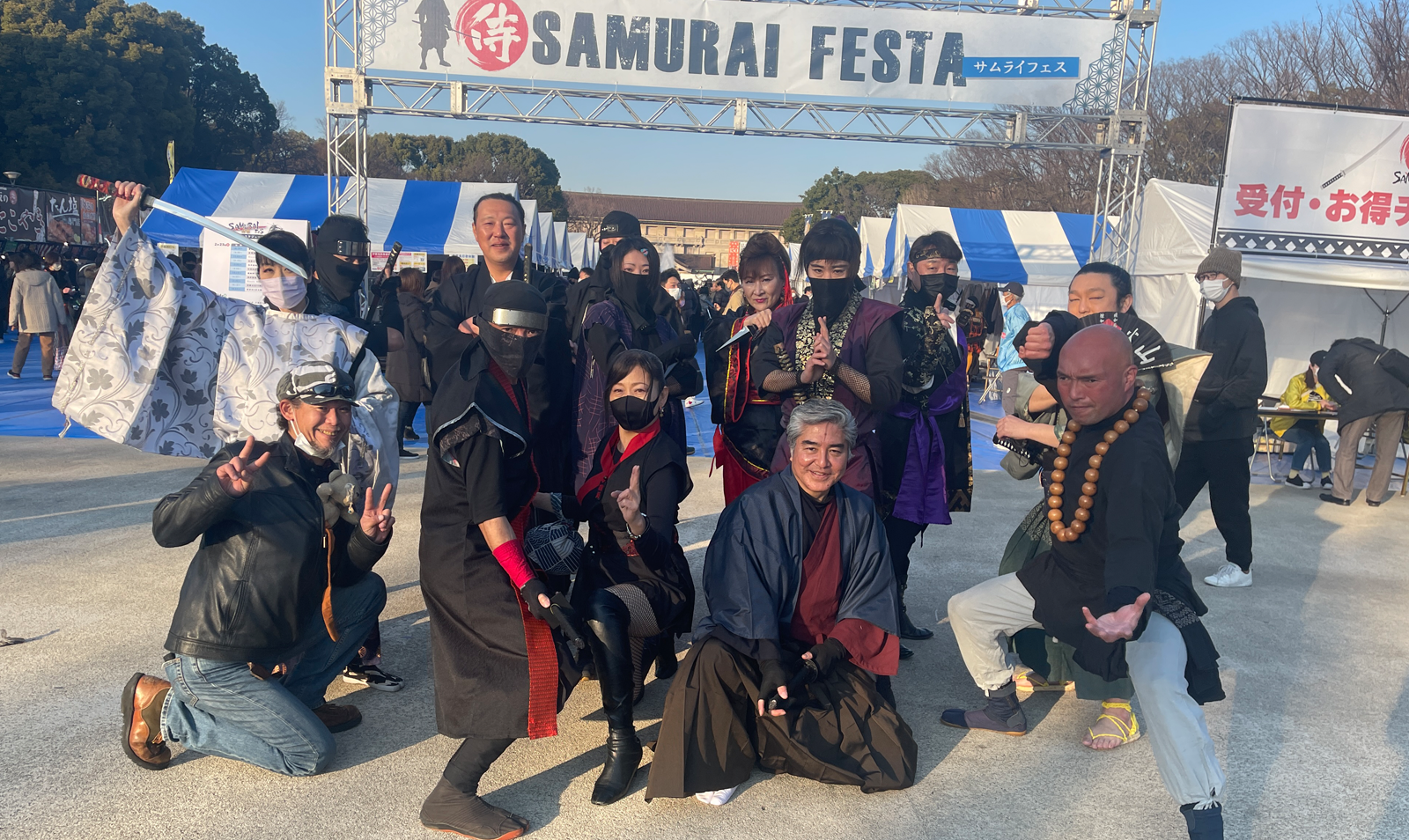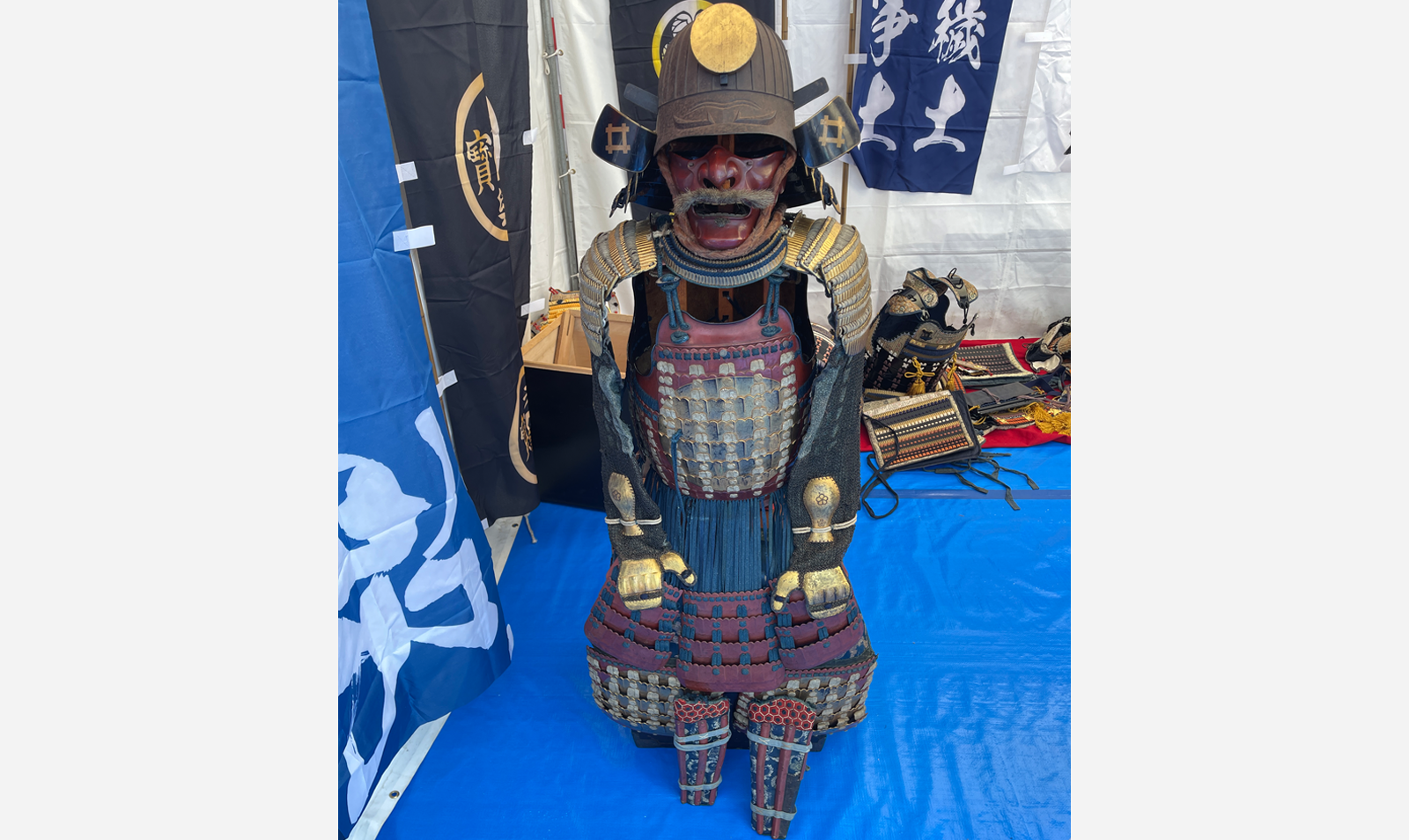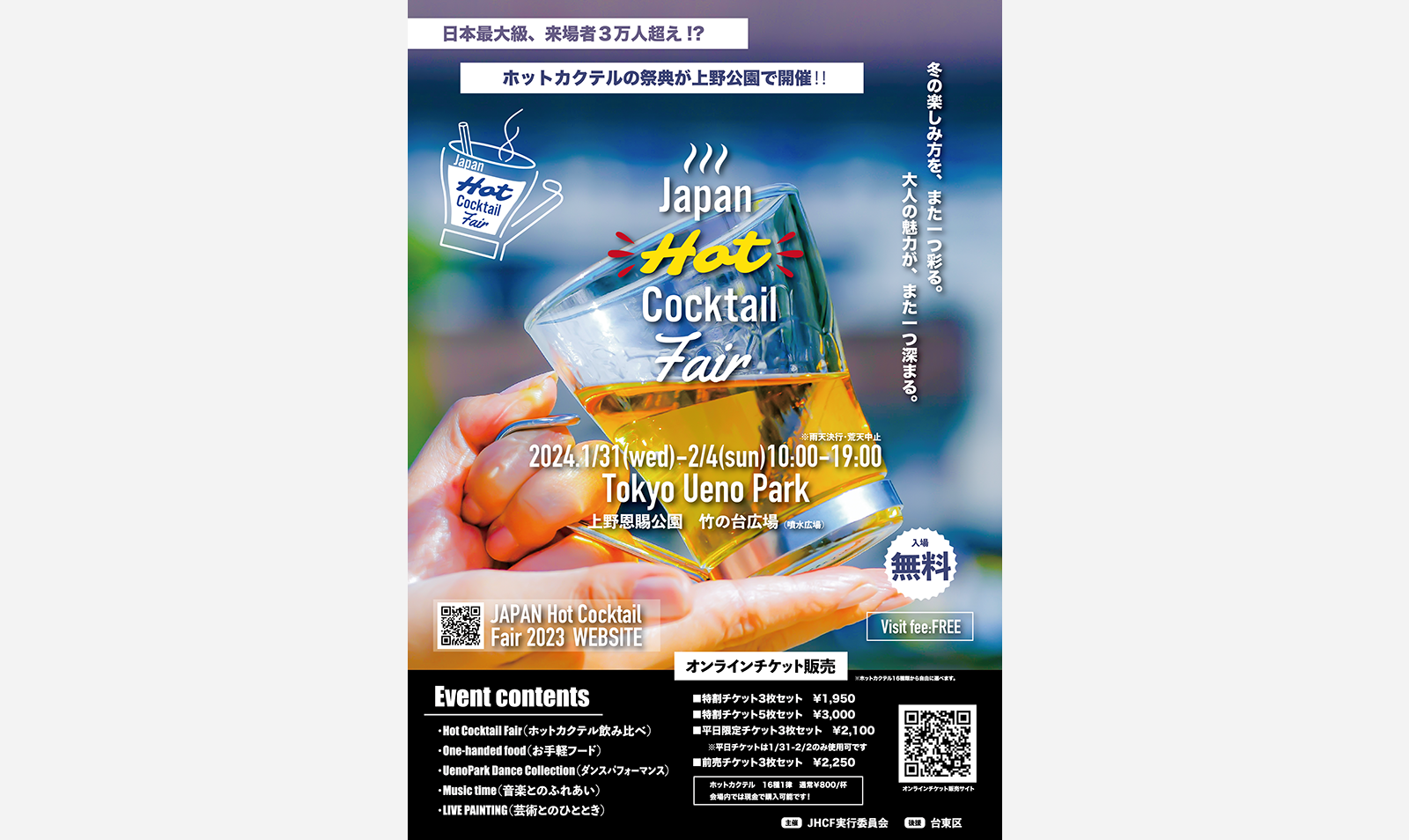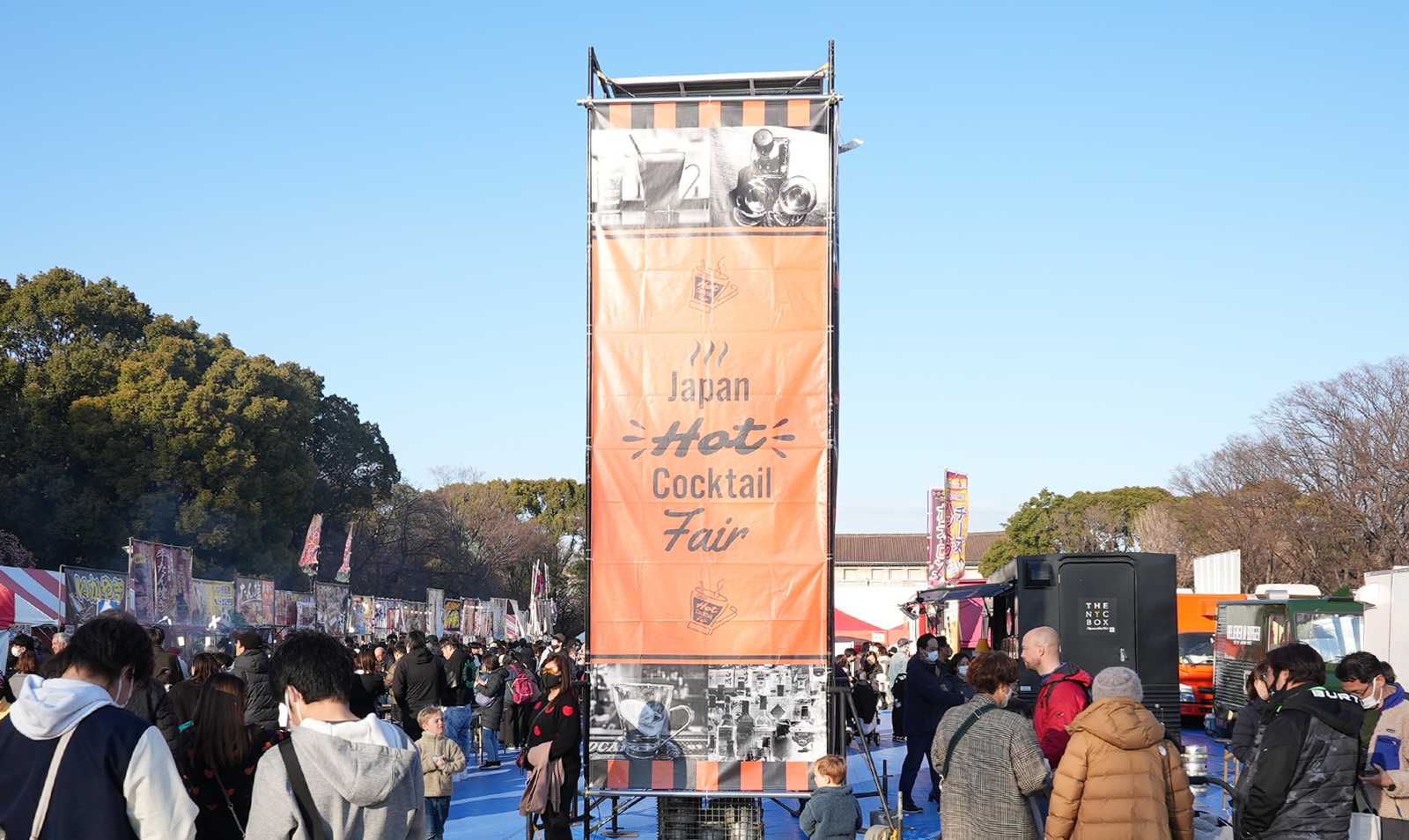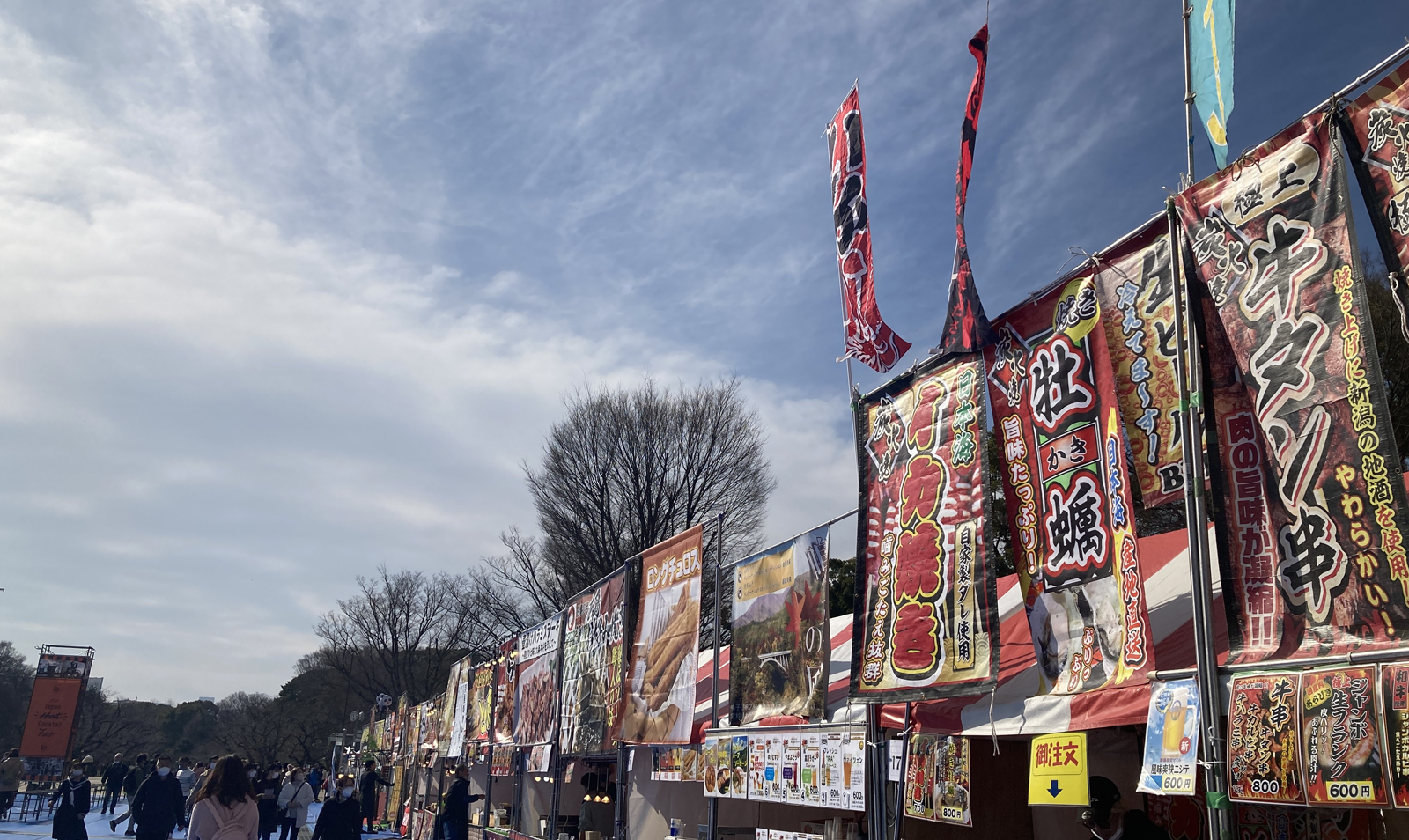Special Feature:
Venture beyond the city to the resort area
of “eternal springtime”
Explore Tokyo’s remote islands
Subscribe
Download
index
- NewsHyatt opens a new hotel in Shibuya
- NewsA shopping and hot spring complex opens next to Toyosu Market
- NewsA limited time only samurai-themed event!
- SeasonJapan Hot Cocktail Fair, a dash of fun in the winter chill
- FeatureVenture beyond the city to the resort area of “eternal springtime”: Explore Tokyo’s remote islands

Hyatt opens a new hotel in Shibuya
February 26, 2024 Shibuya Accommodation* Reservations are currently being accepted for stays from March 15, 2024.

A shopping and hot spring complex opens next to Toyosu Market
February 1, 2024 Toyosu Facility
A limited time only samurai-themed event!
February 22-25, 2024 Ueno Event
Japan Hot Cocktail Fair, a dash of fun in the winter chill
January 31-February 4, 2024 Ueno EventVenture beyond the city to the resort area of “eternal springtime”
Explore Tokyo’s remote islands
Japan is a country of islands. The nine Izu islands and the two Ogasawara islands are known as “the Islands of Tokyo.” Experiencing the natural environment and culture only found in such isolated locales is the real thrill of travel to remote islands. Crystal clear waters and stunning starry skies are just the start of differences from city life that await. Influenced by the Kuroshio Current, the warm climate has earned them the appellation of “everlasting spring." An ideal and idyllic travel destination not only in beach season, but also in colder months as well. Take a step outside the city into a paradise of natural riches.
 All of the 11 islands were formed by volcanic activity.
All of the 11 islands were formed by volcanic activity.
Roughly 1,000 km from central Tokyo, Chichijima and Hahajima are part of the World Natural Heritage Site known as the Ogasawara Islands. These isles, also known as the "Galapagos of the East," are home to a wealth of distinct, native flora and fauna that have evolved in unique ways.
Other than Chichijima and Hahajima, the nine other islands are collectively called the "Izu Islands." Oshima, the closest island to the central Tokyo, is less than 30 minutes away by plane from Chofu Airport. The ease of access is also an attractive point. Natural hot springs gush forth on many islands due to the influence of volcanoes. Let’s take a closer look at six islands that offer the pleasures of hot springs.
Check here for details of the Izu & Ogasawara islands
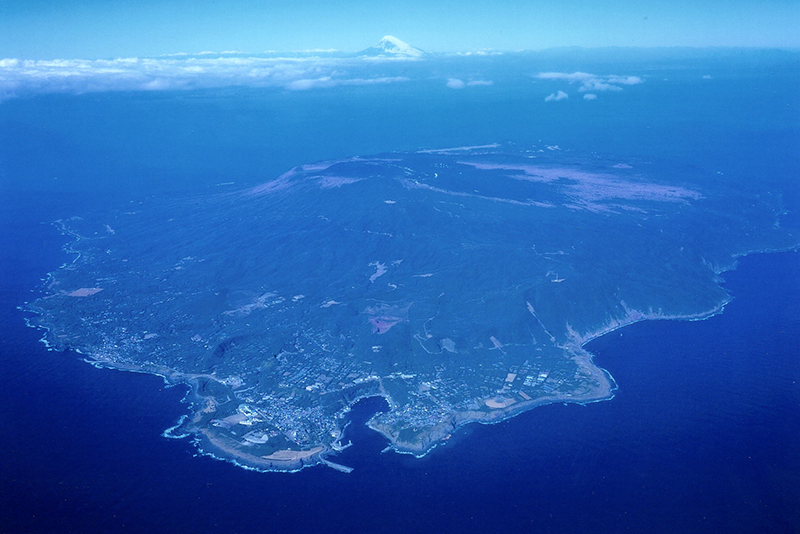
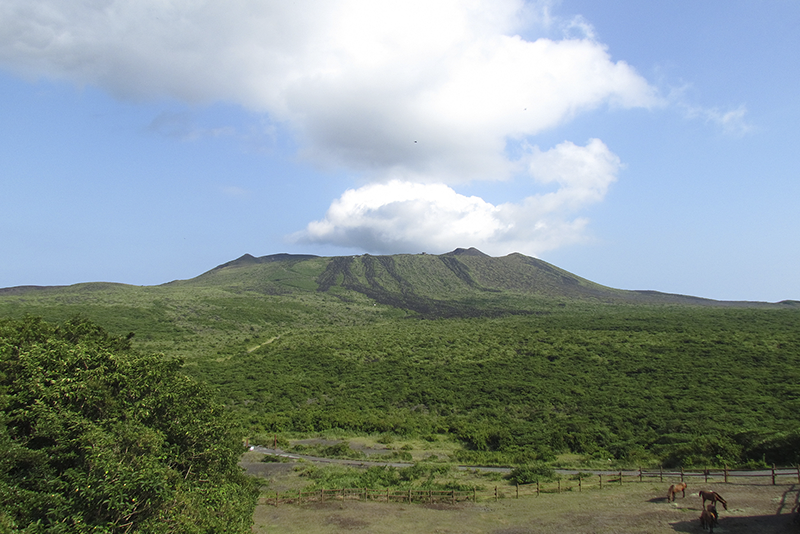
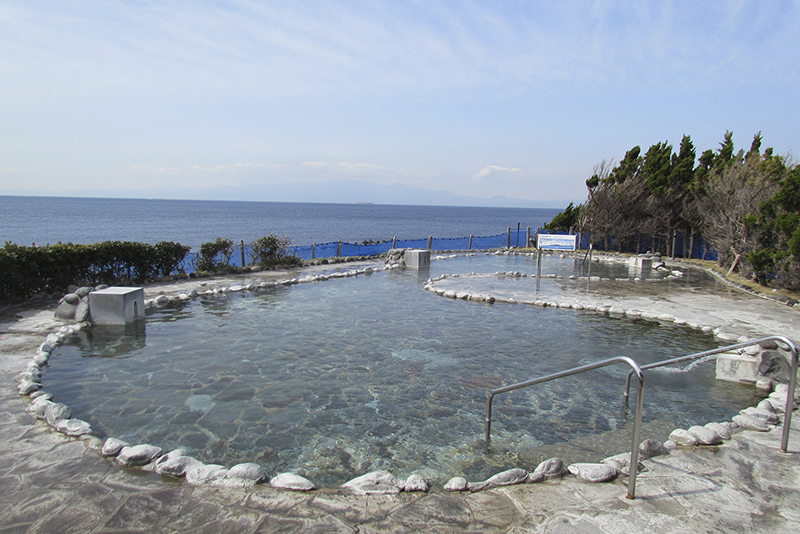
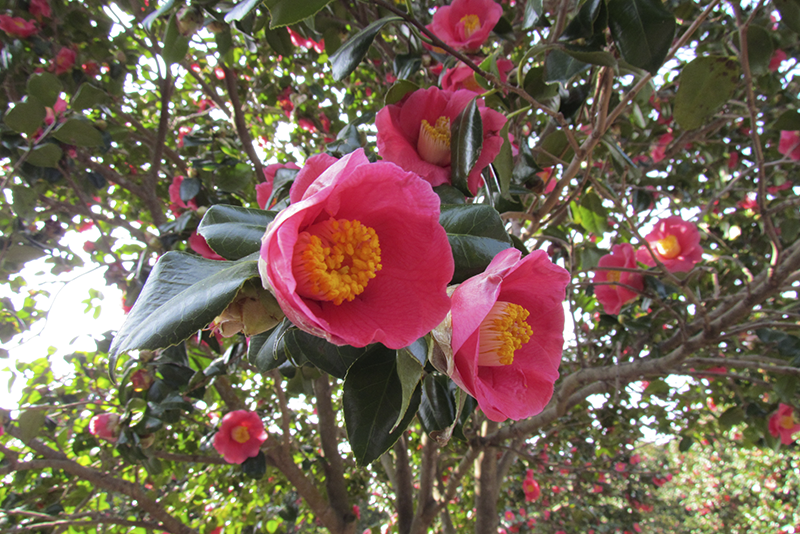
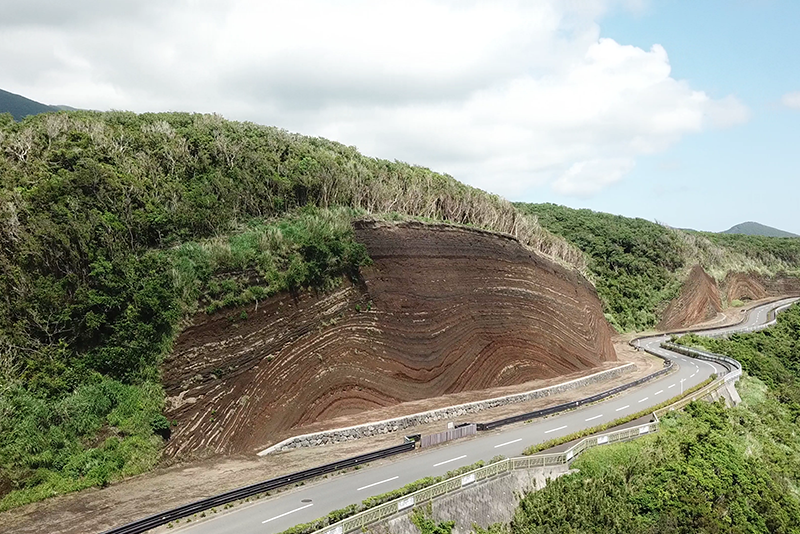 The largest of the 11 islands. Rising in the center 758 meters high is Mt. Mihara, an object of religious veneration also known as “Gojinka-sama,” the “Sacred Fire.” The mountain trail offers magnificent views that encompass tracks of lava flow and the caldera. In the southwestern part of the island, another highlight is the 24 m high, 630 m long cross-section of land showing geological strata.
The largest of the 11 islands. Rising in the center 758 meters high is Mt. Mihara, an object of religious veneration also known as “Gojinka-sama,” the “Sacred Fire.” The mountain trail offers magnificent views that encompass tracks of lava flow and the caldera. In the southwestern part of the island, another highlight is the 24 m high, 630 m long cross-section of land showing geological strata.
There are also plenty of hot springs. “Hamanoyu” is a public, open-air hot spring in a prized location with Mt. Mihara in the background and the ocean before you. Swimsuits are worn in this unisex bath.
The island is also famously known as “Camellia Island,” home to around 3 million wild camellia trees. The Izu Oshima Camellia Festival is held across the island during the peak bloom season from the end of January to the end of March. The main venue is the 7 ha Oshima Park Camellia Garden, which is one of the largest in Japan, featuring about 1,000 species among 3,200 garden variety trees, and around 5,000 “yabu-tsubaki” camellias (the native species). A special area in the park has food stalls and live performances by local artists on the weekends.
http://izu-oshima.or.jp/ (Japanese version only)
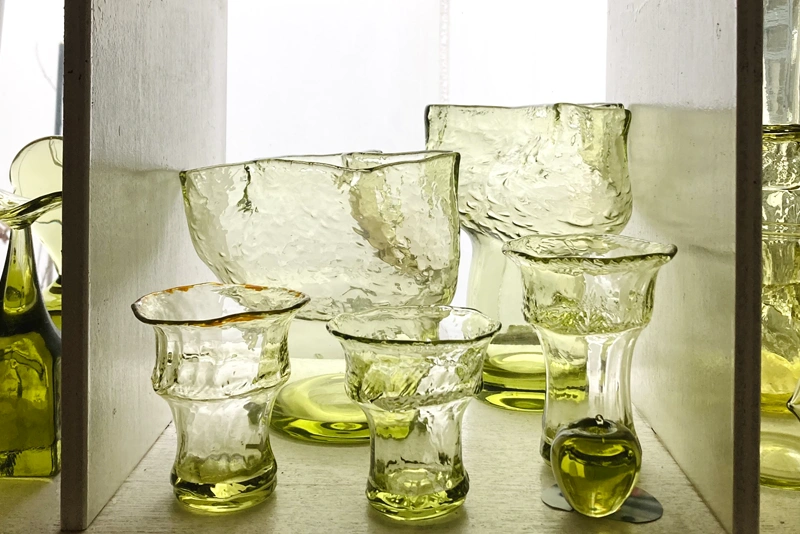
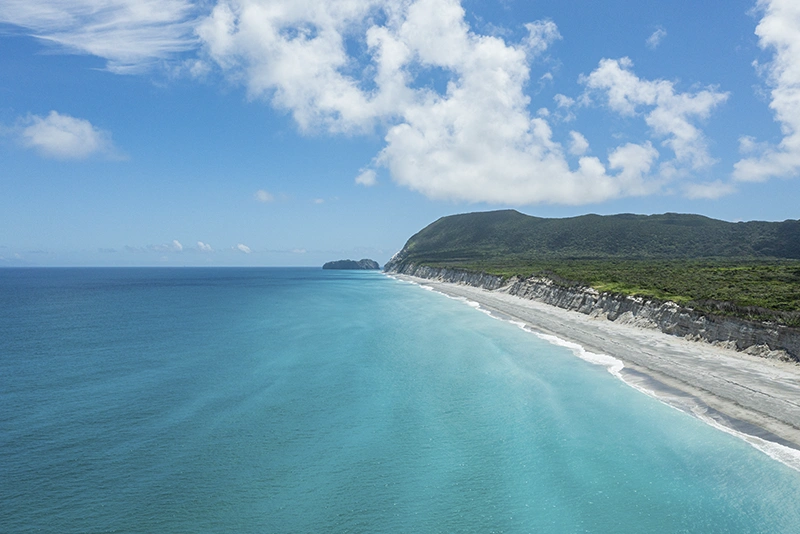
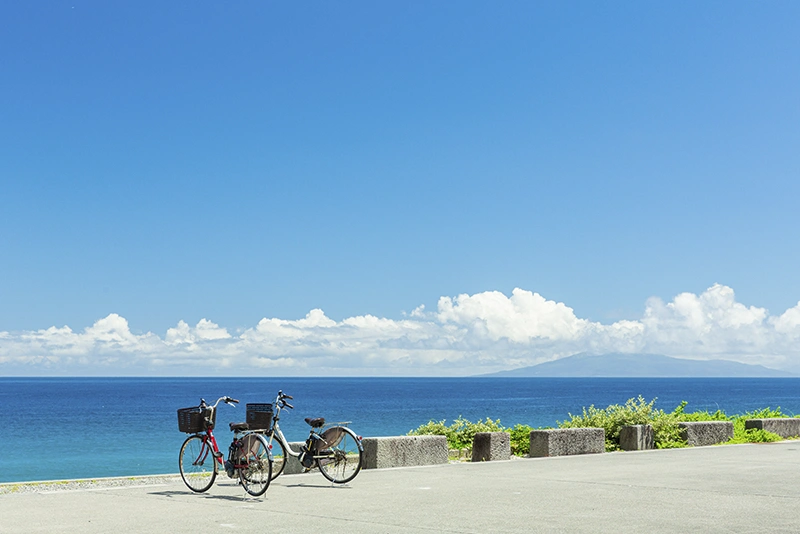
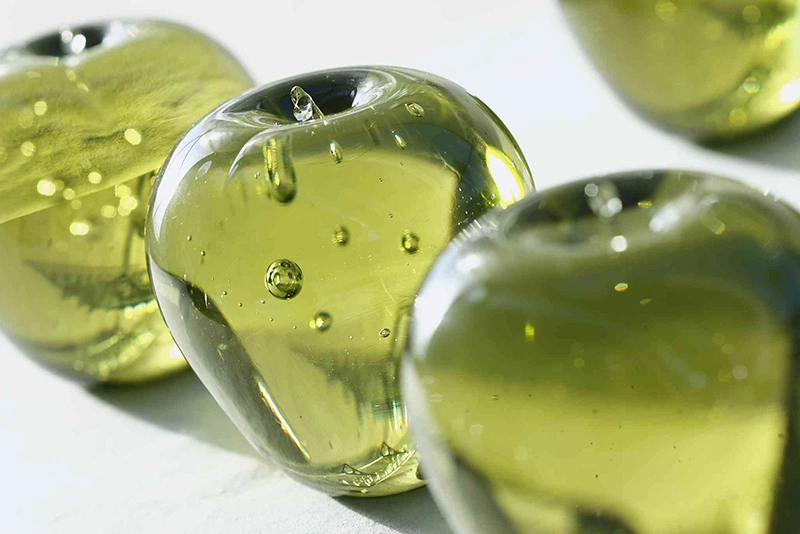
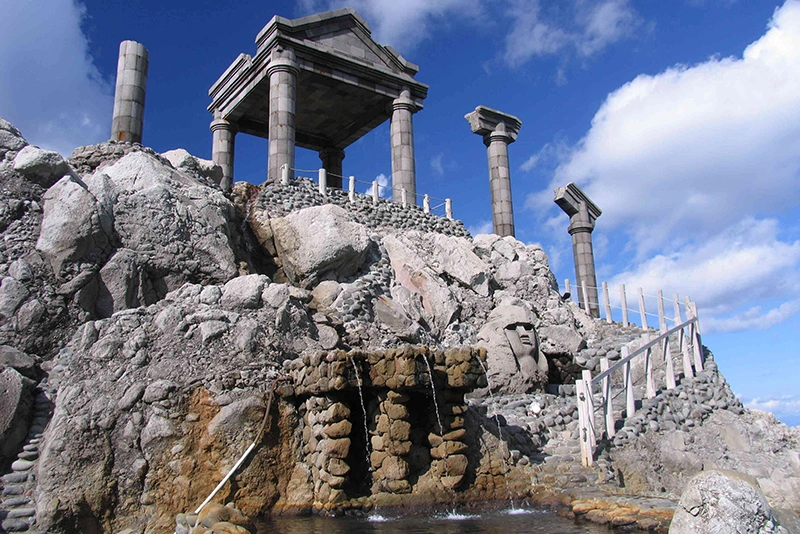 The white sandy beaches and blue waters of Niijima Island are astounding. The roughly 6.5 km long Habushiura Beach is the icon of the island.
The white sandy beaches and blue waters of Niijima Island are astounding. The roughly 6.5 km long Habushiura Beach is the icon of the island.
The special product of the island is Koga stone, a rarity in the world, prized as an excellent building material both light and resistant to heat and water. Distinguished by its olive green color, Niijima Glass is made by heating Koga stone. Some places offer glass painting workshops in which you can carve patterns on the surface of the glass. Hot springs also appear on the west side of the island. The eye-catching building made of Koga stone reminiscent of ancient Greek architecture is home to Yunohama Open-air Hot Springs, which can be enjoyed for free. Swimsuits are worn in this unisex bath.
https://niijima-info.jp/ (Japanese version only)
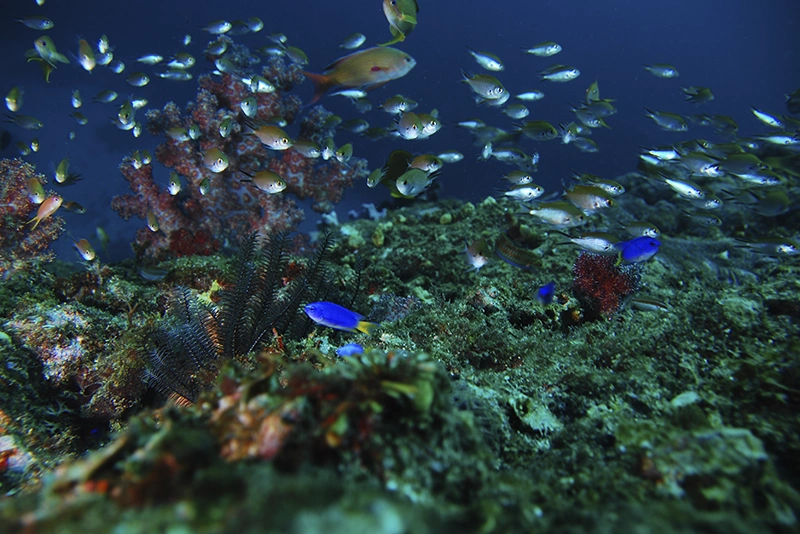
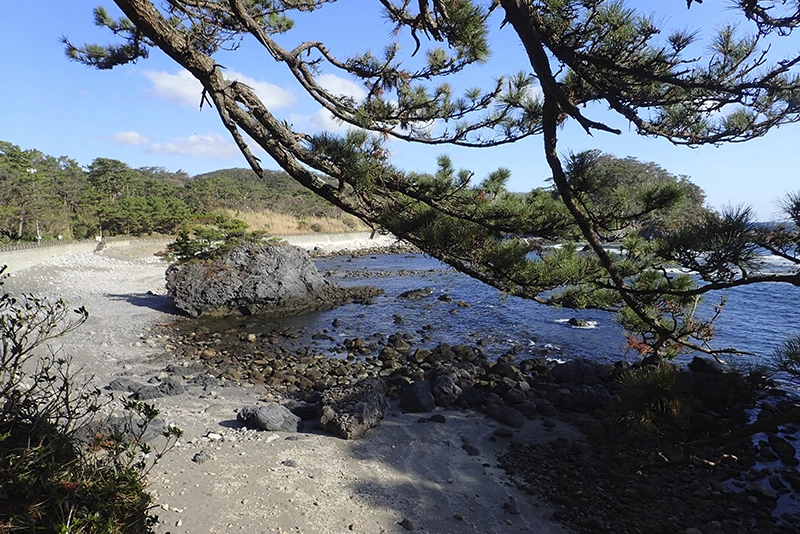
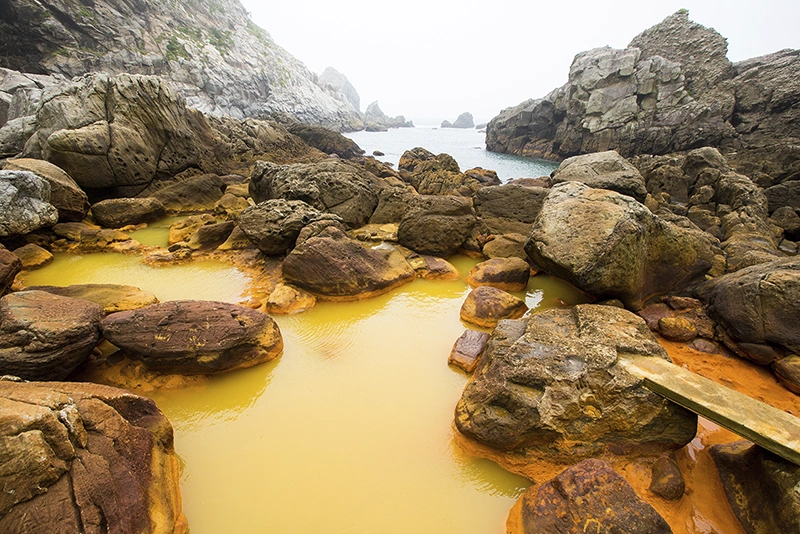
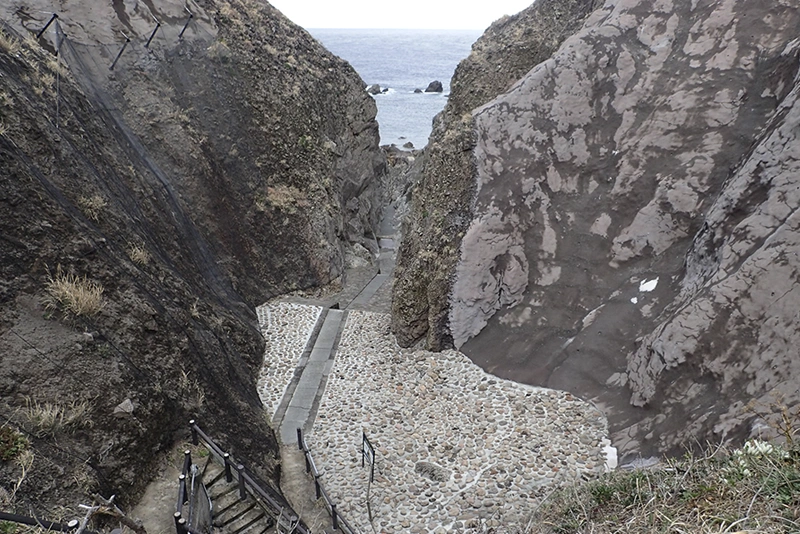
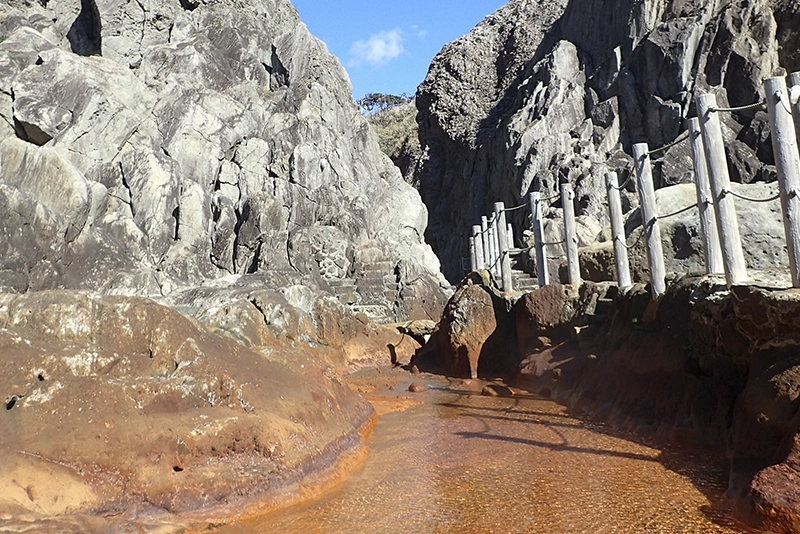 With a circumference of just 12 km, Shikinejima can be explored on foot. The rich green hues of the "Shikine Matsubara" pines woven into the rias coastal inlet are a beautiful sight.
With a circumference of just 12 km, Shikinejima can be explored on foot. The rich green hues of the "Shikine Matsubara" pines woven into the rias coastal inlet are a beautiful sight.
The intricate coastline provides shelter from wind and tide, making it a famous diving spot. Corals, tropical fish, and also sea turtles might be encountered here.
After a dip in the ocean, warm up in the hot springs. Distinct for its earthy color, the Jinata Onsen hot springs is a “secret spot” in rocky ground that looks to have been cut out with a hatchet. With waters approximately 80 degrees at the source, it’s best to find a spot where the hot springs are cooled by the seawater. Swimsuits are worn in this unisex bath.
https://shikinejima.tokyo/ (Japanese version only)
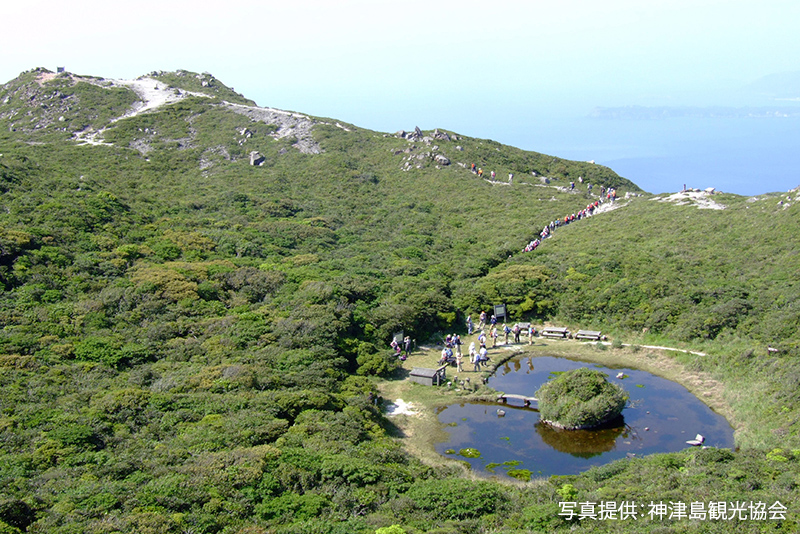
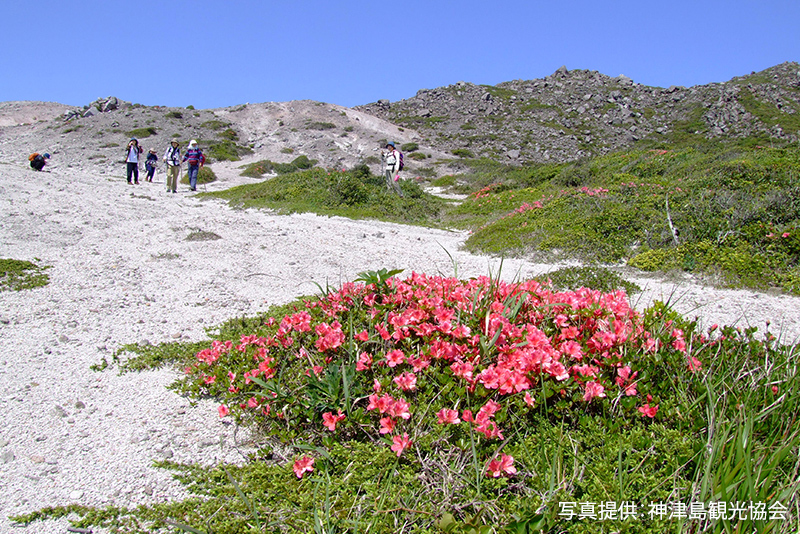
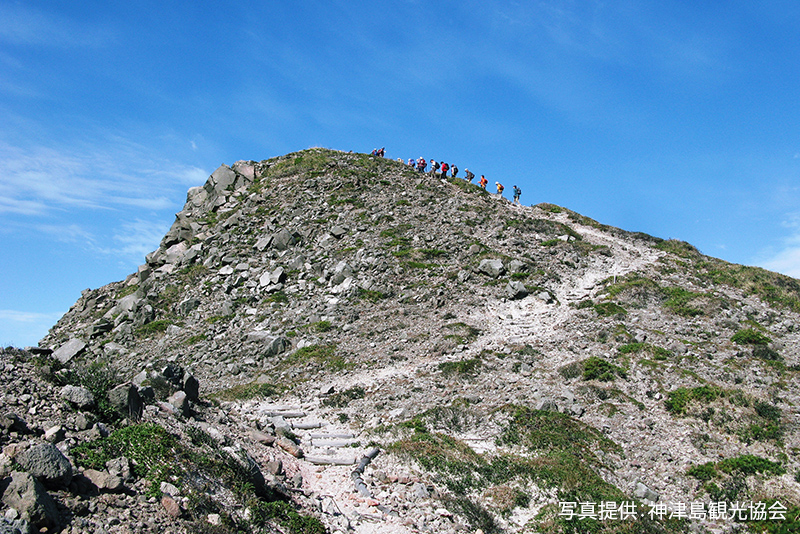
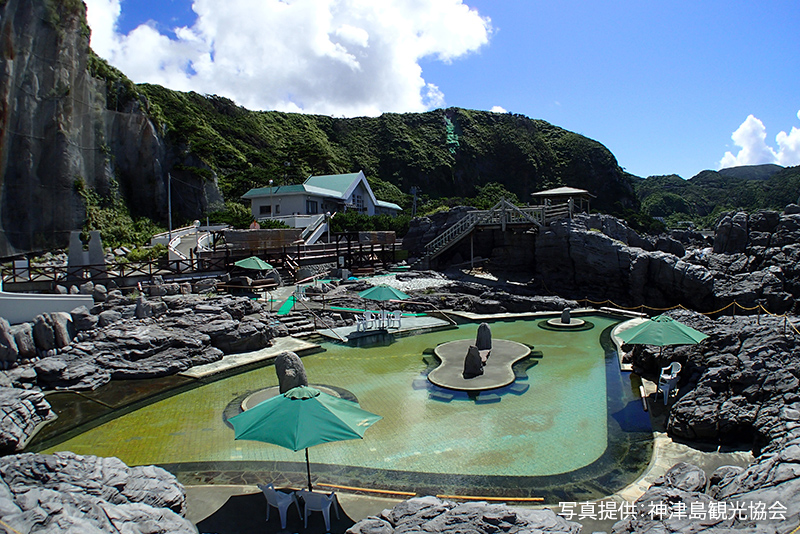
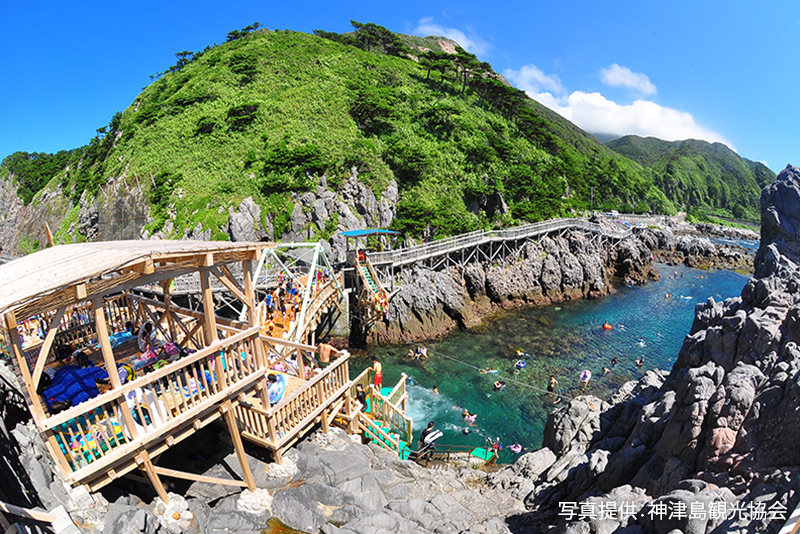 Kozushima is a place of true natural splendor. A variety of flowers bloom throughout the year on Mt. Tenjo in the center of the island. In the north, the 500 m long promenade on the Akasaki coast has a diving board, a popular place for beachgoers also famous for its stellar starry skies.
Kozushima is a place of true natural splendor. A variety of flowers bloom throughout the year on Mt. Tenjo in the center of the island. In the north, the 500 m long promenade on the Akasaki coast has a diving board, a popular place for beachgoers also famous for its stellar starry skies.
Kozushima Onsen Recreation Center is a natural hot spring by the sea, with open-air baths (observation bath and open-air baths currently closed for construction work until spring). The large outdoor bath here, open only in the summer, is one of the largest in Japan at 275 square meters. Enjoy bathing in hot springs, gazing up at stars above.
https://kozushima.com/ (Japanese version only)
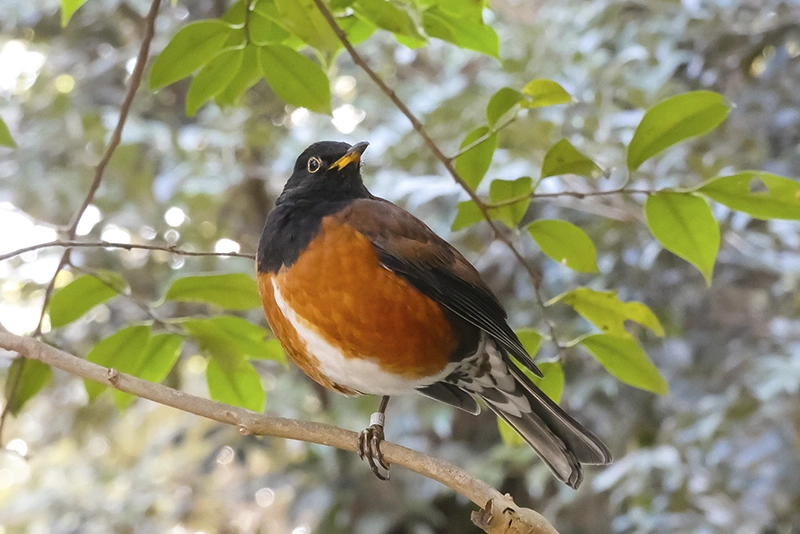
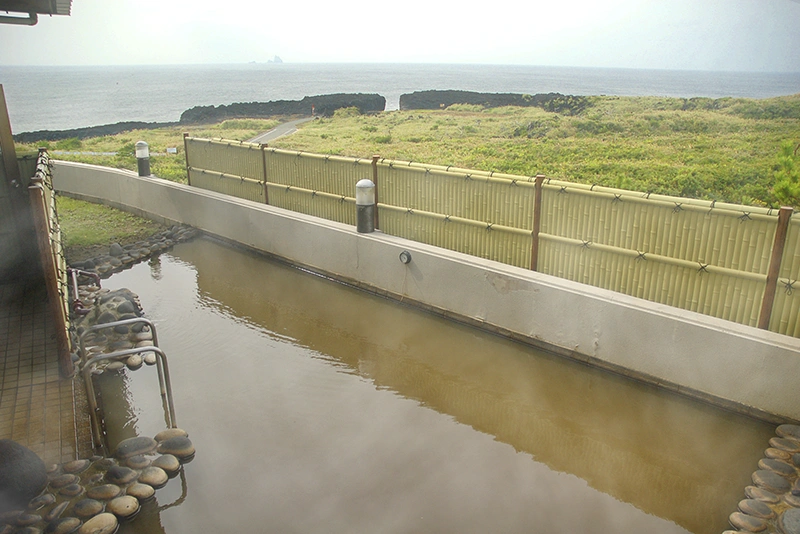
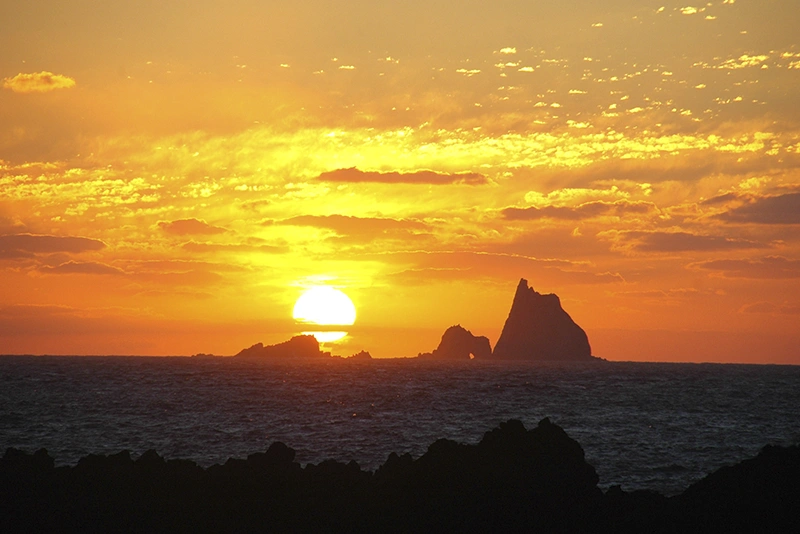
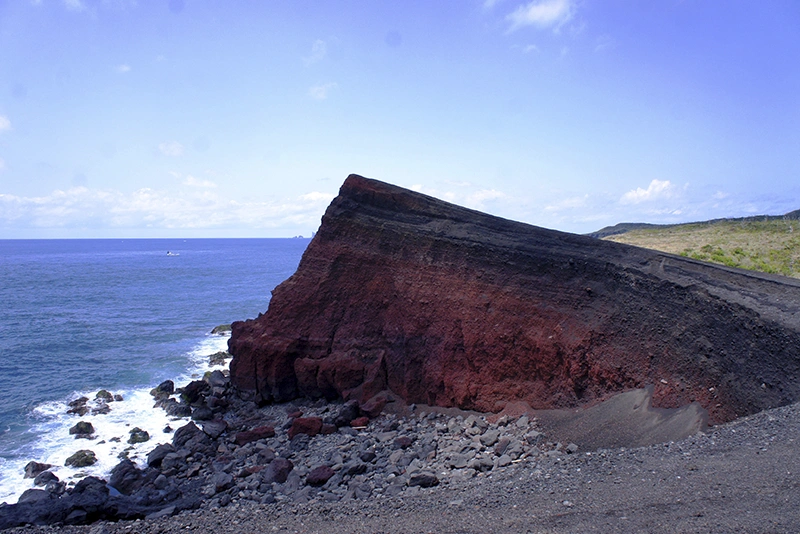
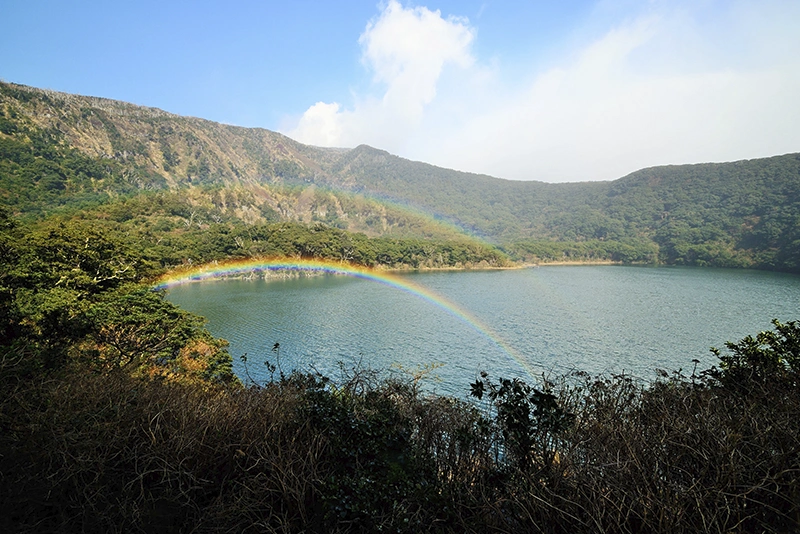 Miyakejima is an active volcano within the Fuji volcanic belt. Including the Mt. Nippana Shinzan cliffs considered to have appeared in a single night from volcanic activity, majestic scenery can be seen everywhere on the island, like a natural volcanic museum.
Miyakejima is an active volcano within the Fuji volcanic belt. Including the Mt. Nippana Shinzan cliffs considered to have appeared in a single night from volcanic activity, majestic scenery can be seen everywhere on the island, like a natural volcanic museum.
The island is also known for the many creatures that thrive within its rich natural environment. The area around the crater lake Tairo-ike Pond, formed by an eruption about 2,500 years ago, is home to an exceptionally high population of wild birds, making it possible to observe rare species such as the Izu Islands Thrush “Akakokko” and the Japanese Wood Pigeon “Karasu-bato,” both designated as national natural monuments. Nearby, a wealth of fish and corals congregate in the sea, making for fantastic diving and snorkeling. Perched on a hill along the coast, Furusato no Yu is a hot spring bath house with an outstanding view. Enjoy soaking in the volcanic waters while gazing at the sunset over the Pacific Ocean.
https://www.miyakejima.gr.jp/ (Japanese version only)
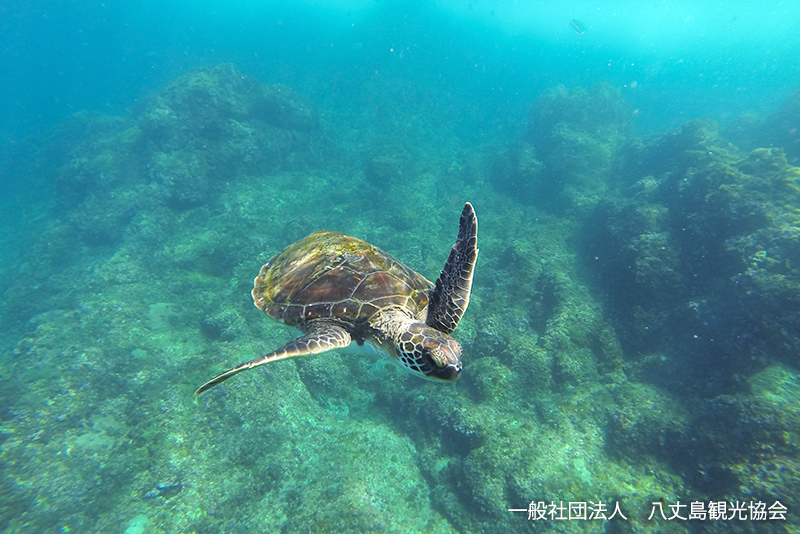
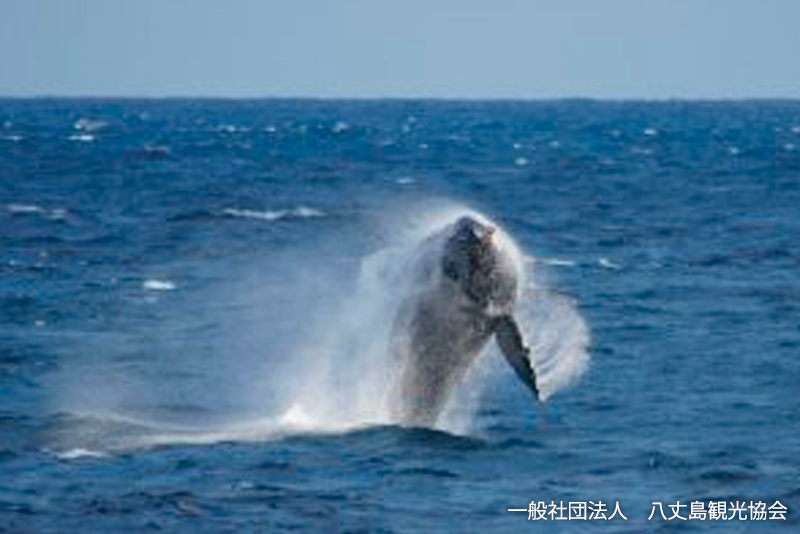
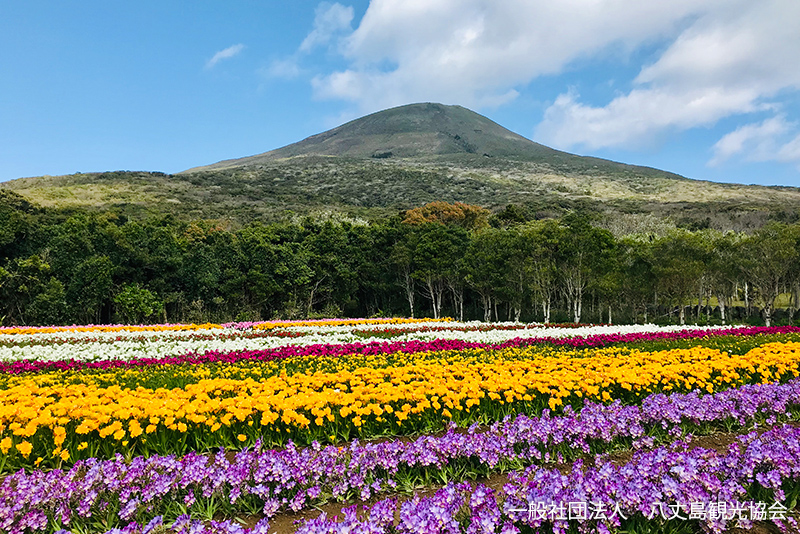
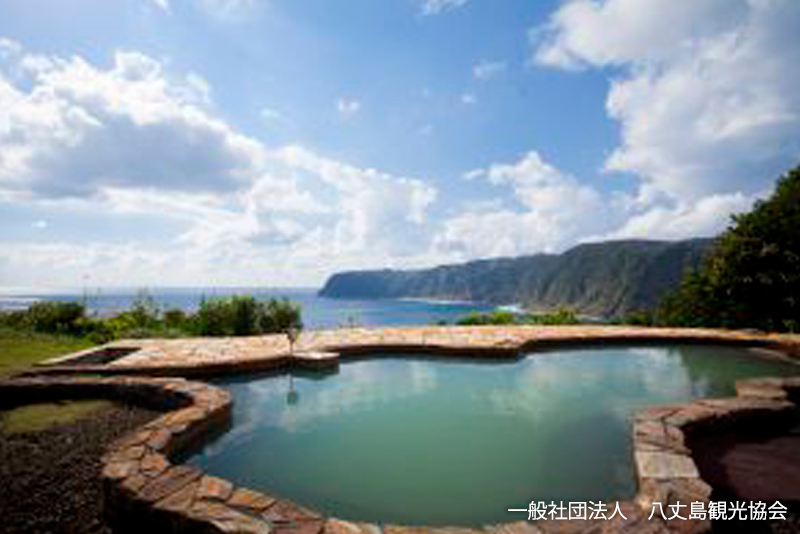 Hachijojima is in the subtropics. The cerulean sea and dazzling flowers heighten the tropical resort feeling.
Known as "Hachijo Blue," the sea has a transparency of 50 meters and is home to rich biodiversity. Humpback whales are known to pass through, with whale-watching tours available on weekends from mid-December to the end of March.
The seven natural hot springs are also a major attraction. Perched on high ground, the open-air hot spring Miharashi no Yu offers a panoramic view of the Pacific Ocean. Whales can also be seen from “Footbath Kirameki.”
Hachijojima is in the subtropics. The cerulean sea and dazzling flowers heighten the tropical resort feeling.
Known as "Hachijo Blue," the sea has a transparency of 50 meters and is home to rich biodiversity. Humpback whales are known to pass through, with whale-watching tours available on weekends from mid-December to the end of March.
The seven natural hot springs are also a major attraction. Perched on high ground, the open-air hot spring Miharashi no Yu offers a panoramic view of the Pacific Ocean. Whales can also be seen from “Footbath Kirameki.”
From March 23 to April 7, 2024, the Hachijojima Freesia Festival will be held to celebrate the 350,000 freesia flowers in full bloom. On weekends, try on a kimono made from Kihachijo, a traditional silk fabric from the island.
https://www.hachijo.gr.jp/ (Japanese version only)
 All of the 11 islands were formed by volcanic activity.
All of the 11 islands were formed by volcanic activity.Roughly 1,000 km from central Tokyo, Chichijima and Hahajima are part of the World Natural Heritage Site known as the Ogasawara Islands. These isles, also known as the "Galapagos of the East," are home to a wealth of distinct, native flora and fauna that have evolved in unique ways.
Other than Chichijima and Hahajima, the nine other islands are collectively called the "Izu Islands." Oshima, the closest island to the central Tokyo, is less than 30 minutes away by plane from Chofu Airport. The ease of access is also an attractive point. Natural hot springs gush forth on many islands due to the influence of volcanoes. Let’s take a closer look at six islands that offer the pleasures of hot springs.
Check here for details of the Izu & Ogasawara islands
1 Oshima





There are also plenty of hot springs. “Hamanoyu” is a public, open-air hot spring in a prized location with Mt. Mihara in the background and the ocean before you. Swimsuits are worn in this unisex bath.
The island is also famously known as “Camellia Island,” home to around 3 million wild camellia trees. The Izu Oshima Camellia Festival is held across the island during the peak bloom season from the end of January to the end of March. The main venue is the 7 ha Oshima Park Camellia Garden, which is one of the largest in Japan, featuring about 1,000 species among 3,200 garden variety trees, and around 5,000 “yabu-tsubaki” camellias (the native species). A special area in the park has food stalls and live performances by local artists on the weekends.
http://izu-oshima.or.jp/ (Japanese version only)
2 Niijima





The special product of the island is Koga stone, a rarity in the world, prized as an excellent building material both light and resistant to heat and water. Distinguished by its olive green color, Niijima Glass is made by heating Koga stone. Some places offer glass painting workshops in which you can carve patterns on the surface of the glass. Hot springs also appear on the west side of the island. The eye-catching building made of Koga stone reminiscent of ancient Greek architecture is home to Yunohama Open-air Hot Springs, which can be enjoyed for free. Swimsuits are worn in this unisex bath.
https://niijima-info.jp/ (Japanese version only)
3 Shikinejima





The intricate coastline provides shelter from wind and tide, making it a famous diving spot. Corals, tropical fish, and also sea turtles might be encountered here.
After a dip in the ocean, warm up in the hot springs. Distinct for its earthy color, the Jinata Onsen hot springs is a “secret spot” in rocky ground that looks to have been cut out with a hatchet. With waters approximately 80 degrees at the source, it’s best to find a spot where the hot springs are cooled by the seawater. Swimsuits are worn in this unisex bath.
https://shikinejima.tokyo/ (Japanese version only)
4 Kozushima





Kozushima Onsen Recreation Center is a natural hot spring by the sea, with open-air baths (observation bath and open-air baths currently closed for construction work until spring). The large outdoor bath here, open only in the summer, is one of the largest in Japan at 275 square meters. Enjoy bathing in hot springs, gazing up at stars above.
https://kozushima.com/ (Japanese version only)
5 Miyakejima





The island is also known for the many creatures that thrive within its rich natural environment. The area around the crater lake Tairo-ike Pond, formed by an eruption about 2,500 years ago, is home to an exceptionally high population of wild birds, making it possible to observe rare species such as the Izu Islands Thrush “Akakokko” and the Japanese Wood Pigeon “Karasu-bato,” both designated as national natural monuments. Nearby, a wealth of fish and corals congregate in the sea, making for fantastic diving and snorkeling. Perched on a hill along the coast, Furusato no Yu is a hot spring bath house with an outstanding view. Enjoy soaking in the volcanic waters while gazing at the sunset over the Pacific Ocean.
https://www.miyakejima.gr.jp/ (Japanese version only)
6 Hachijojima




From March 23 to April 7, 2024, the Hachijojima Freesia Festival will be held to celebrate the 350,000 freesia flowers in full bloom. On weekends, try on a kimono made from Kihachijo, a traditional silk fabric from the island.
https://www.hachijo.gr.jp/ (Japanese version only)



